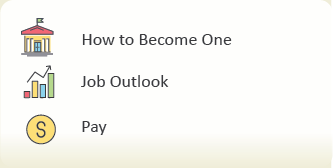An official website of the United States government
 United States Department of Labor
United States Department of Labor
| September 2020
For more information and data, including:

Learn more about this occupation in the Occupational Outlook Handbook.
I work for a large athletic apparel company as a liaison between design teams and vendors. I coordinate with our offices, fabric mills, and manufacturers in Thailand, Vietnam, China, and Egypt.
My focus is on men’s and boys’ apparel. I help manage the process—conception, design, and fabrication—to complete a finished product.
One of my main tasks is to come up with concepts for products by using trend forecasting and researching what’s in the market. Another is to develop fabrics, trims, and sampling garments (product prototypes).
I also create trend boards, which are a visual tool for presenting ideas at the start of the creative process. And when we receive sampling garments, it’s my job to organize, track, and review those items. I have other organizational tasks, too, like making tags to put on the samples and shipping boxes of materials.
Usually, I work about 45 to 65 hours a week. Certain times are busier than others. There are seasons in fashion, and when seasons overlap, things get busy.
I also travel for work. I’ve traveled domestically for meetings, and I was scheduled to travel to China until the pandemic put that on hold.
My mom is very fashionable. When I was growing up, I would watch her put together an outfit, and I admired her sense of style in what she wore. One of our bonding activities was shopping for clothes. That led me to discover more styles and learn about designers and how they got started. This, in turn, pushed me to look deeper into the fashion industry.
But I never thought then that fashion was something I’d do long term. I originally went to school for pre-med, but after changing majors a few times, I decided to transfer to a fashion school in Los Angeles to study design.
I feel like people sometimes underestimate fashion school. But it’s really hard work, and there are long hours. You might spend 6 hours in a sewing lab working on a design, for example.
Most people in my field went to fashion school, but some went to art school or majored in business. The degree can be in anything, but you have to show that you have the skills. I went to school year round and got my bachelor’s degree in fashion design. The first 2 years were design based. I also did multiple internships while in school. Internships are key to entering the fashion industry.
I got recommendations from my professors for internships. My first one was at a jewelry company, and I learned how to do CAD (computer-aided design) during that internship.
My second internship was at a high-end apparel company, where I was able to apply what I learned in class about fabrics and color, the design process, print design, sewing, and more. I also learned how to do things quickly and efficiently, which is very important. Fashion doesn’t sleep. As soon as we end our workday, manufacturers on the other side of the world begin producing what we designed.
You have to be super adaptable and resilient. A vendor could abruptly decide not to purchase a product you’ve already had made, for example, so you must adapt well to change.
And you need to be resilient because people are not always nice, and there are long, grueling hours. You spend time working with a lot of different people, such as team members and vendors, so communication is key.
Make sure it’s something you love to do. And make sure you get internships. Try to get the best internship you can every summer between academic years. Internships are the key to getting a job. You have to be very organized and hard working. Show up every day ready to do anything. Put your best effort into everything, even menial tasks. Be excited to do everything.
You should be walking into job interviews with a portfolio of what you have designed or sewn; pictures of sketches you’ve done by hand or on CAD; and fabrications or prints that you created, chose, or had hand weaved. Also, show that you know how to market something.
The most challenging part is that it’s always changing. There’s not the consistency that everything is flowing like you may think it will. It’s exciting, but difficult, to work between project deadlines when everything is in flux.
I enjoy traveling, so I like being able to do that for work. I feel like I learn a lot on these trips, such as new techniques and new innovations in the industry.
I also like seeing all the samples come out. It’s rewarding to see what you’ve created and to see when everything comes together at the end.
Ryan Farrell, "Fashion designer," Career Outlook, U.S. Bureau of Labor Statistics, September 2020.